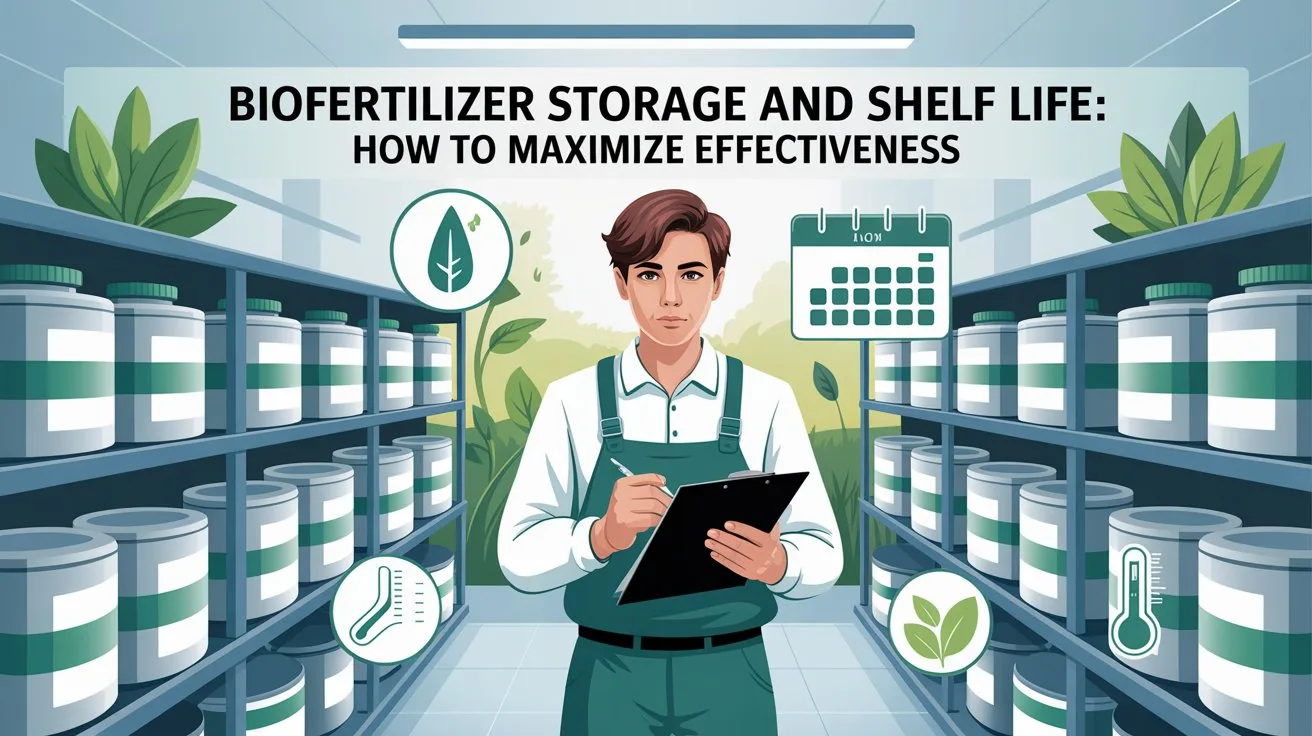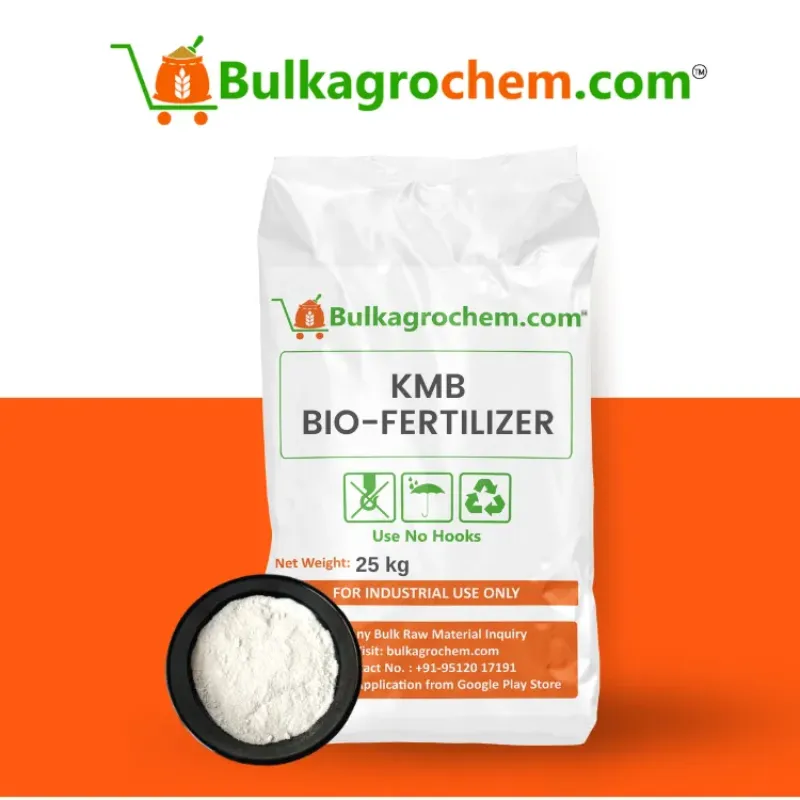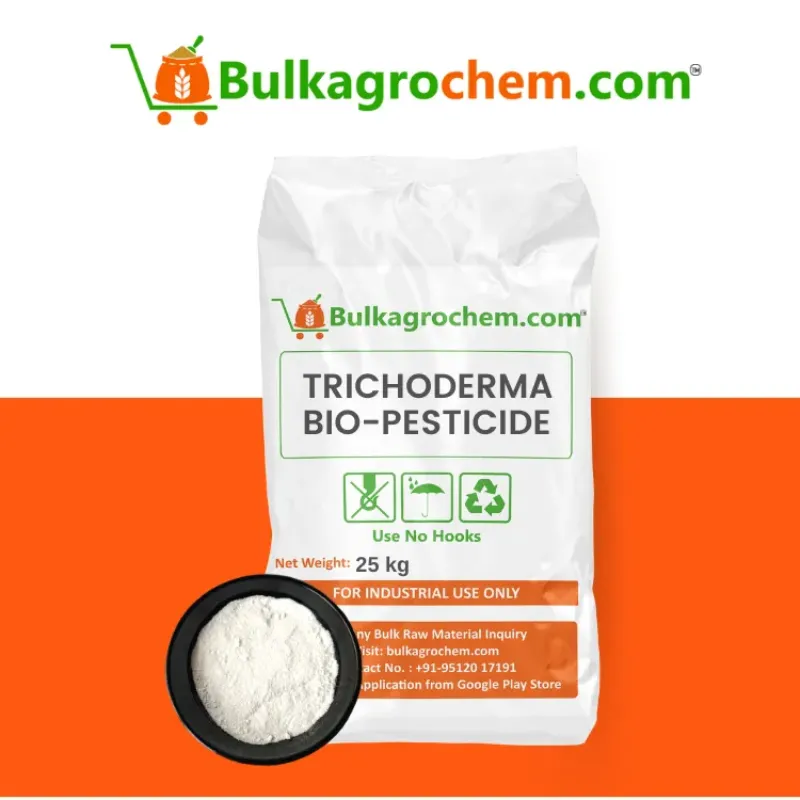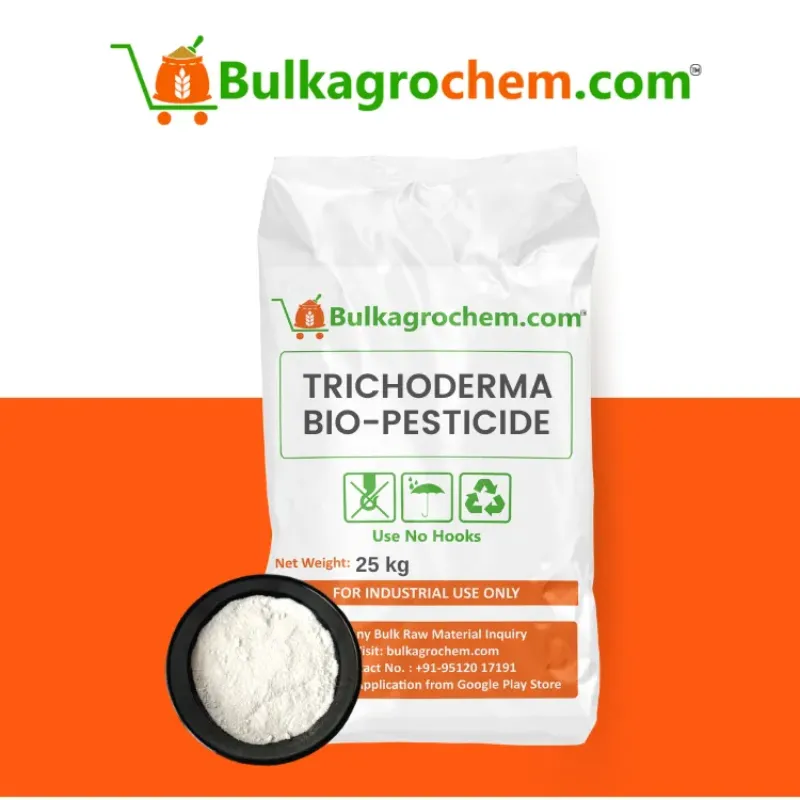Proper handling and storage of biofertilizers and knowing about shelf life is very important to ensure that these environmentally friendly products remain effective. Biofertilizers contain live microorganisms that will lose efficacy due to suboptimal conditions (for example, high temperatures, humidity, and light exposure), so it is very important for the biofertilizer's shelf life to avoid these factors. In order to maximize your biofertilizer shelf life, it is best to keep the product cool, dry, and dark (out of direct sunlight and heat sources). The right storage methods can significantly increase shelf life, and having active microorganisms is essential to improving soil health.
To make sure your biofertilizer dollars are maximized and properly stored, it is important to ensure you handle the products correctly in order to not kill them or introduce contamination or spoilage. Using sealed thick walled containers and the recommended temperature range for each type of biofertilizer will help keep the organisms alive. Tracking expiration dates and managing stock rotation using a biofertilizer storage system before the expiration date will help reduce waste to be able to use quality biofertilizers to adequately charge up your crops. You can get the most from your biofertilizer purchase by being a sustainable farm and enhancing the health of your soil.
Introduction to Biofertilizer Storage and Its Importance
Storage and shelf life of biofertilizers are critical aspects of successfully maintaining efficacy in biofertilizers because biofertilizers contain living organisms, and the living organisms are sensitive to their storage conditions. Biofertilizers that are not stored properly can lead to trouble because the living organisms can die and therefore, have no chance of modifying soil health, increasing nutrient uptake in plants, and overall agricultural productivity. Once you understand how to properly store biofertilizers, you can store them longer so that they remain beneficial.
Why Biofertilizer Storage is Crucial for Maintaining Efficacy
- Storage conditions: Biofertilizers contain microorganisms that are sensitive to changes in storage conditions.
- Temperature: High temperatures can kill microorganisms and low temperatures can slow the activity of microorganisms.
- Humidity: Introducing too much moisture into the storage container could produce microbial growth or mold that will lead to the decreased efficacy of the product.
- Light exposure: Always prevent the product from being exposed to sunlight; UV rays can degrade microorganisms and thus, reduce functional viability.
- Effectiveness of microorganisms: The effectiveness of nitrogen-fixing or phosphate solubilizing microorganisms is due, in part, to their viability. Proper storage practices help to guarantee that microorganisms remain alive when they are applied to soil after being applied to crops, thus providing plant growth and health.
The Importance of Shelf Life in Biofertilizers
Biofertilizer shelf life is the period during which the product remains viable for use.
- Biofertilizers are time-sensitive, meaning they lose their effectiveness over time if not stored correctly.
- The shelf life is influenced by the quality of storage: factors like exposure to air, moisture, or extreme temperatures can shorten it.
Maximizing shelf life: Proper storage techniques such as refrigerating or keeping biofertilizers in cool, dry, and dark places can extend their effectiveness, providing farmers with more time to use the product without loss of quality.
Environmental and Economic Implications of Proper Storage
Environmental benefits:
- Reduced waste: Extending the shelf life of biofertilizers means fewer discarded products, which contributes to lower environmental waste.
- Sustainable farming: Proper storage reduces the need for synthetic fertilizers, promoting eco-friendly, sustainable agriculture practices.
Economic benefits:
- Cost-effective: Proper storage reduces the need for frequent replacements, leading to long-term savings for farmers.
- Efficient use: When stored properly, biofertilizers can be used effectively, optimizing their benefits and reducing the dependency on chemical alternatives.
The Science Behind Biofertilizers and Shelf Life
- Biofertilizers are products that contain live microorganisms, such as bacteria, fungi, and algae, which help in the growth and health of plants by improving nutrient availability and soil quality.
- The shelf life of biofertilizers is crucial because it determines how long the microorganisms in the product remain effective in the soil.
- The viability of these microorganisms is highly sensitive to environmental factors, making biofertilizer storage essential to maintain their activity and effectiveness.
How Temperature and Humidity Affect Biofertilizer Shelf Life
Temperature:
- High temperatures can kill the microorganisms in biofertilizers, reducing their effectiveness. For example, temperatures above 35°C can lead to thermal degradation, causing the microbial population to die off quickly.
- Low temperatures can slow down microbial activity, making the microorganisms dormant, but they can still remain viable as long as they are not exposed to freezing conditions.
- Ideal temperature range for storing biofertilizers is between 10°C and 20°C.
Humidity:
- Excessive moisture can cause clumping, molding, and growth of unwanted organisms, leading to a decrease in the microbial population. Biofertilizers that are exposed to high humidity are more prone to contamination.
- Low humidity is also not ideal, as it may cause the biofertilizer to dry out and the microorganisms to become inactive or die.
- To maintain biofertilizer shelf life, it is essential to store products in a dry and moisture-controlled environment.
The Role of Light in Reducing Biofertilizer Effectiveness
Microbial Life in Biofertilizers and Its Sensitivity
- Microorganisms in biofertilizers, such as nitrogen-fixing bacteria or phosphate-solubilizing fungi, are living organisms that are sensitive to environmental changes.
- The survival and effectiveness of these microbes depend on optimal storage conditions. Poor conditions, such as high temperatures, humidity, or light exposure, can cause these organisms to lose their ability to promote plant growth.
- Storage conditions that preserve microbial activity are vital for ensuring the biofertilizer shelf life remains intact, allowing the microorganisms to function effectively when applied to the soil.
Best Practices for Biofertilizer Storage
To ensure that biofertilizers remain effective and preserve their microbial life, it’s important to follow best practices for biofertilizer storage. Proper storage conditions can extend their shelf life and maintain their ability to enhance soil fertility.
Here are the key points to follow:
- Temperature Control: Store biofertilizers in a cool environment to avoid excessive heat that could damage the microorganisms.
- Humidity Management: Keep the storage environment dry to prevent clumping or mold growth.
- Light Exposure: Store biofertilizers in dark spaces to avoid exposure to sunlight, which can degrade microbial effectiveness.
Ideal Temperature, Humidity, and Light Conditions for Storing Biofertilizers
- Temperature: Storing biofertilizers at a consistent, moderate temperature is crucial. Extreme temperatures, either hot or cold, can impact the microbial activity, reducing effectiveness.
- Humidity: High moisture can lead to contamination, while too little moisture can dry out the microorganisms. A moderate humidity level between 30-60% is ideal to keep biofertilizers fresh and active.
- Light Exposure: Dark environments are optimal for storing biofertilizers, as exposure to light, particularly UV light, can damage the microorganisms and reduce their shelf life.
Airtight Containers to Preserve Biofertilizers
- Airtight storage is essential for preserving the viability of biofertilizers. Storing biofertilizers in sealed containers helps maintain the ideal temperature and humidity conditions.
- Plastic or glass containers with airtight seals are effective for preventing air exposure and moisture buildup, which can degrade microbial life.
- Always seal the containers tightly after use to avoid contamination and exposure to environmental conditions that could shorten their shelf life.
Handling and Transporting Biofertilizers Correctly
Economic and Environmental Benefits of Proper Biofertilizer Storage
Storing biofertilizers correctly is not just about preserving the product for effective use; it also brings both economic and environmental benefits. Proper storage can extend biofertilizer shelf life, reduce wastage, and contribute to more sustainable farming practices.
Cost-Effectiveness of Long-Lasting Biofertilizers
- Reduced wastage: Storing biofertilizers properly ensures that you can use them for longer periods, reducing the need for frequent repurchases.
- Minimized loss: Proper biofertilizer storage and shelf life management helps to reduce microbial degradation, ensuring that the products remain potent and effective.
- Improved ROI: Using long-lasting biofertilizers allows farmers to get the maximum return on investment by ensuring that the purchased products remain viable for use when needed.
Sustainability: Reducing Chemical Fertilizer Dependency
- Lower chemical input: Proper storage ensures that biofertilizers are used efficiently, reducing the need for synthetic fertilizers that often harm soil health.
- Organic alternatives: By ensuring that biofertilizer shelf life is maximized, farmers can rely more on organic and eco-friendly solutions.
- Supporting sustainable farming: Extended shelf life of biofertilizers means farmers can consistently use these natural products, reducing their reliance on environmentally harmful chemicals.
Environmental Impact of Efficient Biofertilizer Use
- Lower carbon footprint: By reducing the need for synthetic fertilizers, the overall carbon footprint of farming practices decreases.
- Improved soil health: Biofertilizer storage ensures that these microorganisms are kept alive and active, enriching the soil with essential nutrients while improving its structure.
- Reduced pollution: Efficient use and storage of biofertilizers help reduce the runoff of harmful chemicals into nearby water systems, preventing pollution.
FAQs
Q1. What is the best way to store biofertilizers?
Biofertilizers should be stored in airtight containers, kept in a cool, dry place with controlled temperature and humidity. Avoid direct sunlight to maintain their effectiveness.
Q2. How do I know if my biofertilizer has expired?
If the biofertilizer has a noticeable change in smell or color, or if it has become clumpy or hard, it may have expired. Always check the expiry date on the packaging.
Q3. Can biofertilizers be refrigerated?
Yes, liquid biofertilizers can often be refrigerated to extend their shelf life, but solid forms should be kept in a cool, dry location and away from direct heat or sunlight.
Q4. How long do biofertilizers last in storage?
Depending on the type and storage conditions, biofertilizers can last anywhere from 6 months to 2 years. Always follow the manufacturer's guidelines for optimal shelf life.
Q5. Can biofertilizers be stored together with chemical fertilizers?
No, biofertilizers should be stored separately from chemical fertilizers. Chemical fertilizers can harm the beneficial microorganisms in biofertilizers.
Q6. Can I store biofertilizers in bulk?
Yes, you can store biofertilizers in bulk, but ensure that they are kept in appropriate conditions (cool, dry, airtight) to preserve their quality and prevent contamination.
Q7. How do temperature and humidity affect biofertilizer quality?
High temperature and humidity can degrade the microorganisms in biofertilizers, reducing their effectiveness. Low temperatures and stable humidity levels are ideal for preserving their potency.
Conclusion: Master Biofertilizer Storage for Better Crop Yields
Proper storage of biofertilizers is a crucial step toward maximizing their effectiveness and, ultimately, your crop yields. By ensuring that biofertilizers are stored under the right conditions—cool, dry, and away from direct sunlight—you can preserve their microbial activity and extend their shelf life. Effective biofertilizer storage and shelf life management helps in maintaining the potency of these beneficial microorganisms, ensuring they remain active and ready to improve soil health.
When you take the time to implement best practices for biofertilizer storage, such as using airtight containers and monitoring temperature and humidity levels, you invest in the long-term health of your crops. By mastering this aspect of agricultural management, you not only optimize your biofertilizer shelf life but also support sustainable farming practices that reduce the need for chemical fertilizers. In turn, this contributes to both economic savings and environmental sustainability. Embrace proper biofertilizer storage techniques and watch your farm thrive with healthier, more productive crops.





